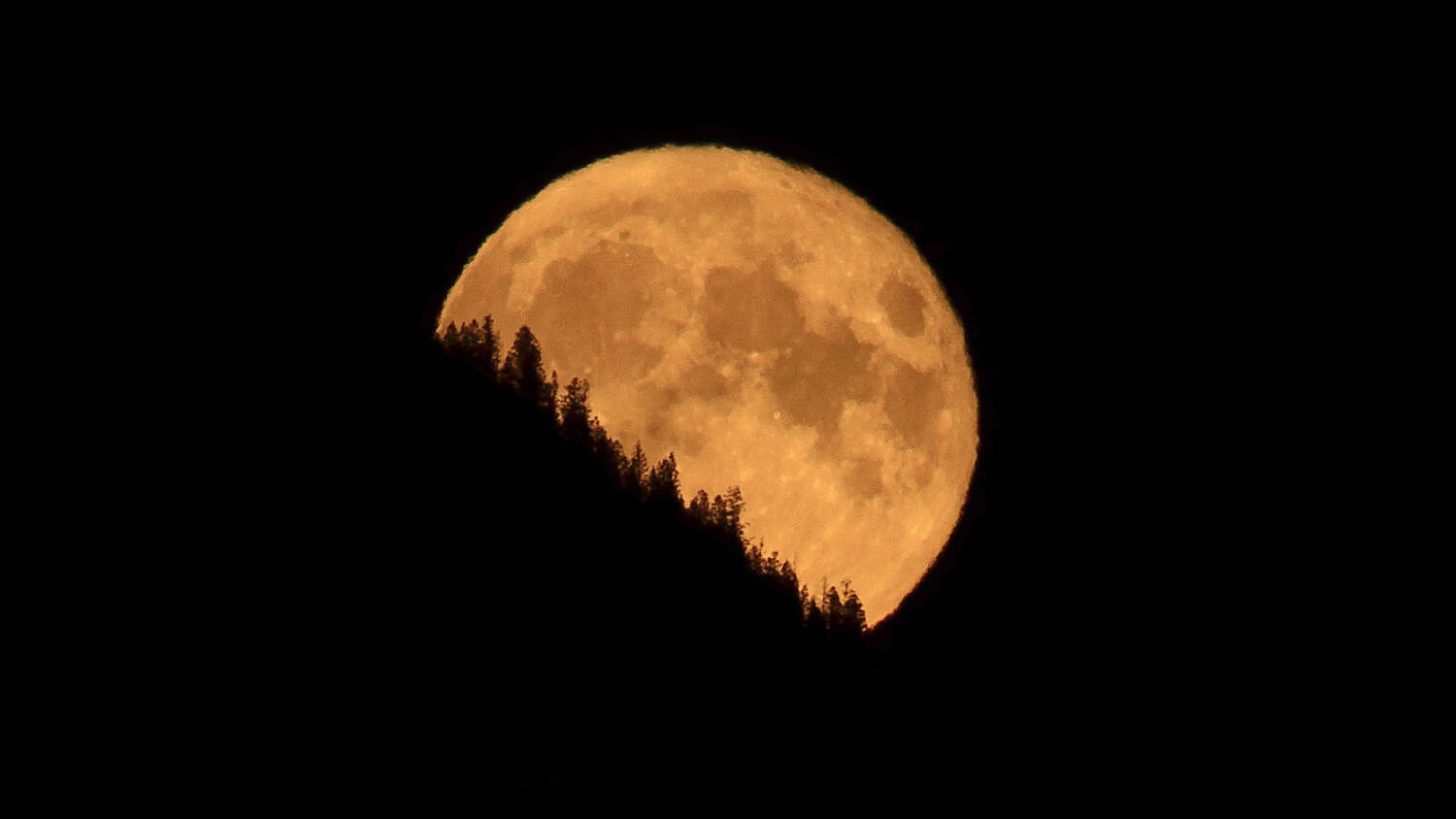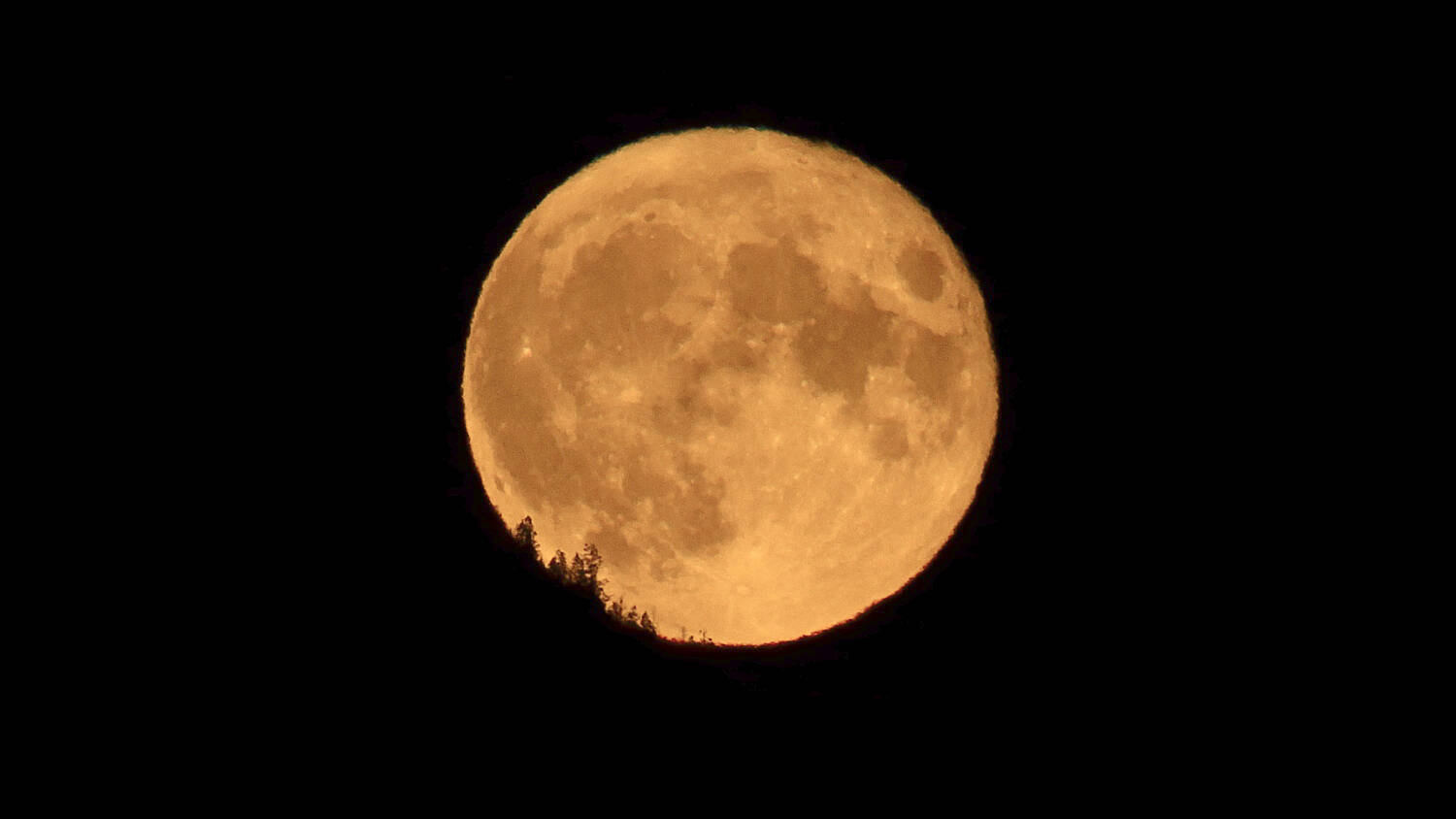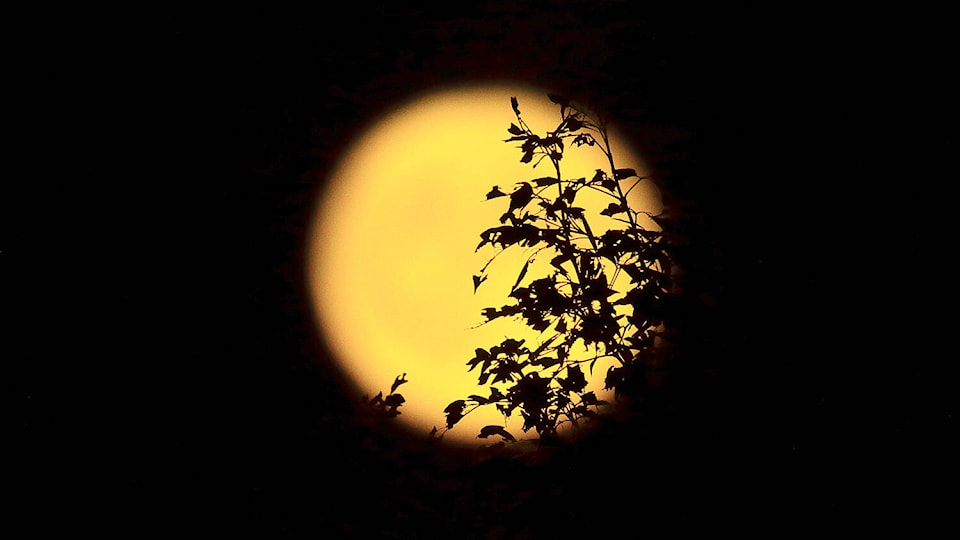Dan Hicks
From Cranbrook to Kimberley, on the warm night of July 13, observant residents and visitors alike beheld some natural summer night splendor when our big Buck Moon — the largest full moon of the year, rose splendidly from the southeast into a clear East Kootenay sky, from behind Mount Baker - at 23:16 MDT, 43 minutes past its astronomical moonrise time (as viewed from north central Cranbrook).
Luna announced her imminent rise by illuminating wispy horizonal cloud then emerged as a radiant golden orb, silhouetting a line of mountainside evergreens and, when clear of Baker, profiled the leafy branches of neighborhood deciduous trees.
An average full moon has an angular diameter of 31 arcminutes (0.52 degrees/angular diameeter equals apparent diameter), but our Buck Moon was a perigee full moon in Luna’s elliptical orbit and, at its closest proximity to Earth — 1.2 light-seconds — had a 33-arcminute angular diameter – slightly larger than an average moon, but no candidate for a “supermoon” crown (a super-exciting designation imagined by a US astrologer in 1979).
As our summer nights slowly lengthen to greater prominence, away from city lights on clear low-moonlight nights, we can behold the starry heavens and the Milky Way with our own eyes; perhaps inspired by the James Webb Space Telescope’s revelatory deep sky visions, but transcending the online vicariousness of our times.
At Cranbrook’s latitude (49.50 N), on the night of July 31st, the commencement of our ever expanding time of “true night” advances to midnight and lasts for three hours and 39 minutes (August 1 — 00:00 to 03:39 MDT).
Unfearingly, we can enjoy meteors – shooting stars – inbound meteoroids from outer space – as they vaporize in showy streaks of light across the night sky, for here on terra firma, the odds of getting whacked by a surface-impacting survivor-meteor — a “meteorite” — are infinitesimal.
Presently, our East Kootenay night sky revives, as close as a 20-minute drive from inner Cranbrook, the Milky Way reappears in its full summer glory, but our relentless urban light pollution will inevitably push such an opportunity for an engagement with a natural night sky ever outward, before eventually eliminating it altogether for all but truly rural EK locales.
Regardless, the longer nights of summer 2022 lie before us, so enjoy our summer stars for what radiance they yet possess and remember that, amid a myriad of these infinitely distant natural other-world lights, southward to the ancient archer Sagittarius lies the heart of our own Milky Way Galaxy.


